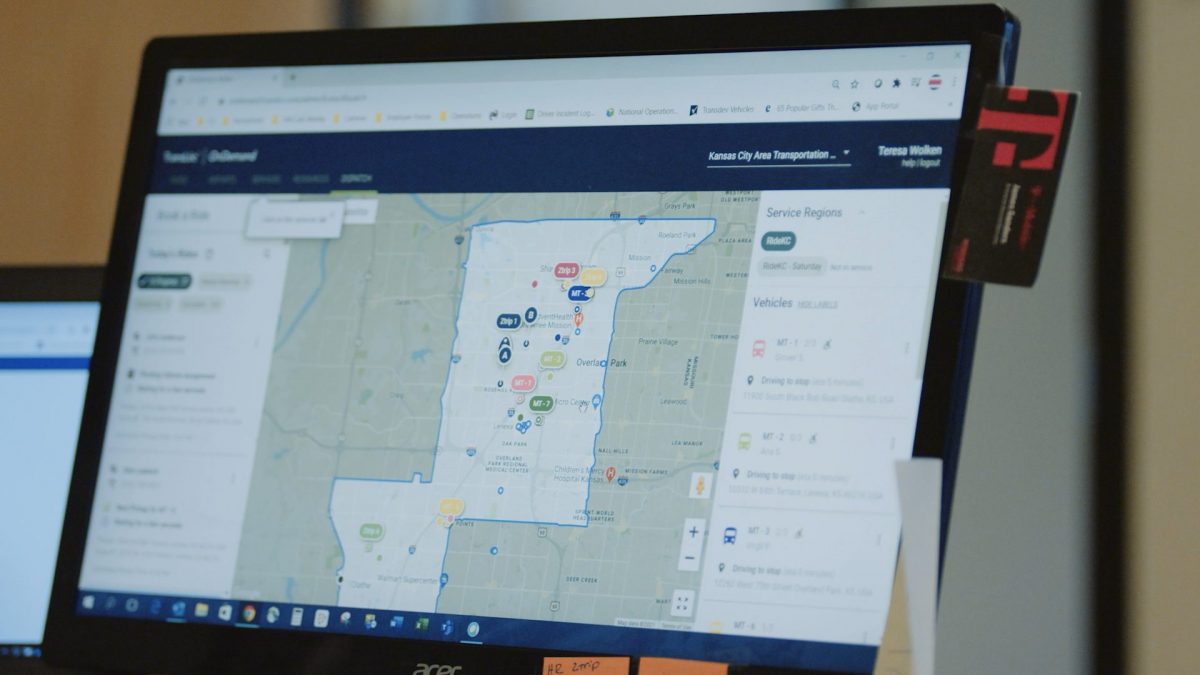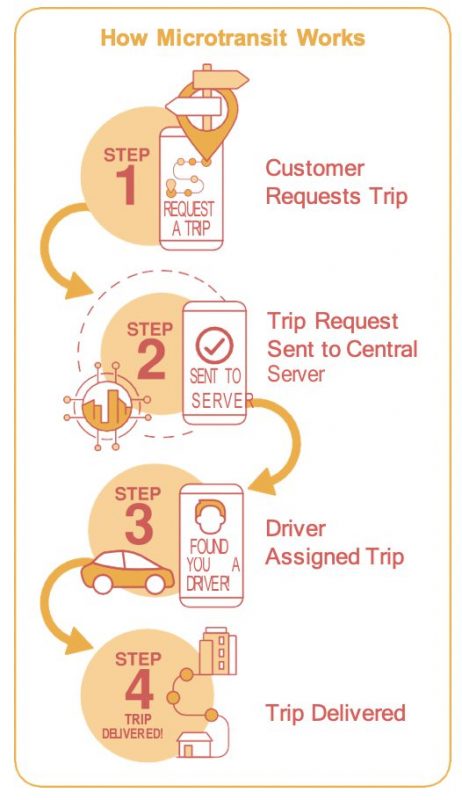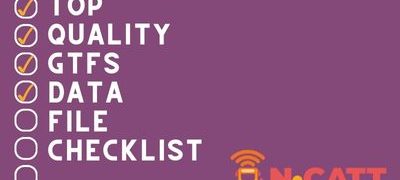Microtransit is typically an on-demand service available to the general public that uses app-enabled trip request and fare payment functions. Microtransit is generally used as a complement to fixed route service, providing transportation during time periods or in geographic regions poorly served by regular fixed route service. While microtransit is more expensive to operate than fixed route transit and often charges a premium fare, its flexibility provides a good customer experience in hard-to-serve areas. For examples of use cases, see the Fact Sheet “The Flavors of Microtransit“.
Microtransit is increasingly popular in all kinds of communities around the country. What is it exactly?
- App-Based: A primary feature of microtransit is requesting trips and paying for service via a mobile application. Some service providers also provide a call-in option and/or prepaid or cash option for those without smart phones.
- On-Demand: A defining feature of microtransit is that it is delivered on demand. Like Uber or Lyft, customers request the ride when it is needed, not hours or days in advance.
- At the Door or at the Corner: Microtransit can operate corner- to-corner (pick-ups and drop-offs at a nearby intersection), curb-to-curb, door-to-bus-stop, or door-to-door. It all depends on the target user group, community context, and trip types.
- Over-and-Above ADA: Microtransit is typically a complement to regular ADA-required demand response service, not a replacement. This allows for more flexibility in how it is provided.
- Premium Service, Premium Fare: Because the service is more customized to users’ individual transit needs and provides a more convenient travel experience, agencies typically charge a higher fare than regular fixed route or ADA service.
- Contracted or In-House: Service may be contracted out to turnkey operators, or vehicles can be retrofitted and put into microtransit service (see graphic on bottom of reverse side).
Benefits
Microtransit has been growing in popularity around the country because it confers many benefits. These include:
- Service can be provided in hard-to-serve areas, such as suburban or rural communities, or hilly geographies that are hard to access by traditional buses.
- Customers like cash-free payment options.
- Customers, including late-shift workers and those with an unpredictable schedule, like the flexibility of on-demand service.
- App-based trip requests are convenient for the user.
- Turnkey operators can make implementation easy and potentially more cost efficient for agencies.
Challenges
Despite the advantages of microtransit, there are challenges that interested agencies should be aware of:
- Even with federal capital grants to start the service, microtransit is still more expensive to operate per trip than fixed route transit (typically $15 – $30 per trip).
- For turnkey operating arrangements, agencies must be very careful and specific about requirements around data sharing. Agencies also need a detailed and comprehensive performance plan to monitor and evaluate the operator’s contract.
- For microtransit provided in-house, agencies should understand the technology and staffing requirements for running a microtransit service.
- Service should be structured so that it does not simply transfer riders from existing fixed route or demand response service onto microtransit vehicles.
- Providing maximum availability can be a challenge if the service depends on mobile app access and bank accounts or credit cards for payment.


 Many agencies exercise a mix of internal and contracted operations, apart from routing and scheduling software which is typically purchased or licensed from third-party technology companies
Many agencies exercise a mix of internal and contracted operations, apart from routing and scheduling software which is typically purchased or licensed from third-party technology companies



